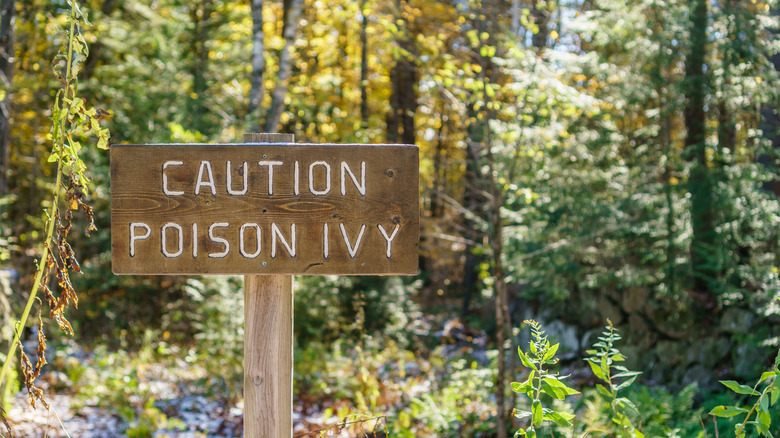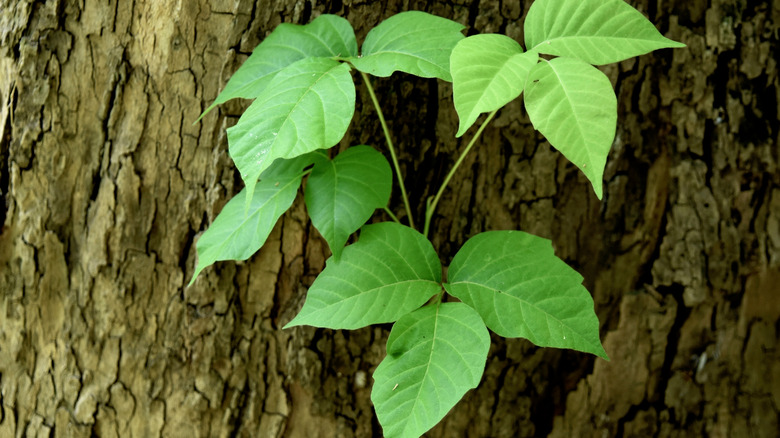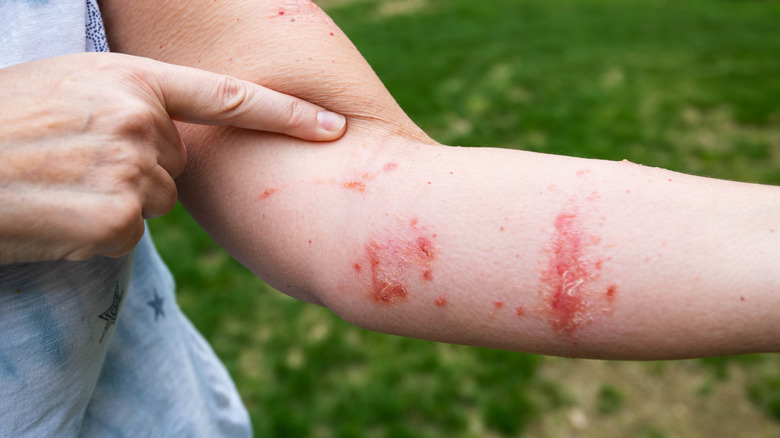What Does Poison Ivy Look Like? How To Spot And Avoid It This Summer
Have you ever gotten an itchy rash after being outdoors? Just brushing up against poison ivy can leave you with painful red blisters. Poison ivy can be a vine or shrub, each with three leaves on one stem, and you're more likely to encounter it while engaging in outdoor activities in eastern North America where the plant grows native. The best way to avoid urushiol, the oily resin that causes rashes, is by covering up your extremities when in a woodsy area.
A rash from contact with poison ivy can take one to two days to appear. When it does, affected skin will become itchy and inflamed. It often develops in a straight line since that's how the plant brushes against your body, but you can transfer the poisonous oil all over if you get it on your hands. A mild reaction to poison ivy will only need soothing lotions to treat it; after about three weeks, it should be gone. Meanwhile, severe rashes need to be treated with prescription medication. Knowing how to identify and avoid contact with poison ivy is the best way to protect yourself while having fun outside.
Leaves of three, let it be
There are two types of poison ivy; the eastern variety is an ivy that climbs, while the western variety grows as a shrub. They both contain the rash-causing oil in their foliage. The best way to identify if the plant you're near is poison ivy is by looking at the leaves on the tip of their stem. The saying "leaves of three, let it be" is important to remember. There will be a group of three leaves, with a long one at the top and two growing on the stem beside it. They can look muted or glossy and they have toothed edges that come to a point at the tip.
Depending on the time of year, you can also identify poison ivy plants by their flowers or fruit. The green flowers bloom during springtime. They're small with five petals that grow in clusters where the leaves connect to the plant's stem. Once fall begins, poison ivy will mature and develop fruits that look like little white berries. If you find poison ivy growing in your yard, you'll definitely want to kill and get rid of it.
Wear long sleeves and pants
You can develop a rash from poison ivy at any time, but it's more likely during the summer since the weather is nice and people spend more time outside. Avoiding green or woody areas will prevent you from coming into contact with the plant, but that's not always possible. You may encounter poison ivy if you're gardening, hiking, camping, fishing from the shoreline, hunting, or working in construction.
The most effective way to protect yourself from the poisonous oil is by covering your body with clothing. You should wear long sleeves, pants that go down to your ankles, high socks, boots, and gloves, according to the Centers for Disease Control and Protection. Once you're home, you'll also need to wash everything you wore in its own load on a hot water cycle with detergent. The poisonous oil can stay on objects for up to five years, so you must clean and disinfect everything, including the tools you used while in or near a wooded area. Another option is to apply barrier creams that contain an ingredient called bentoquatum. Although, this doesn't ensure you're entirely protected like wearing long clothing would.


